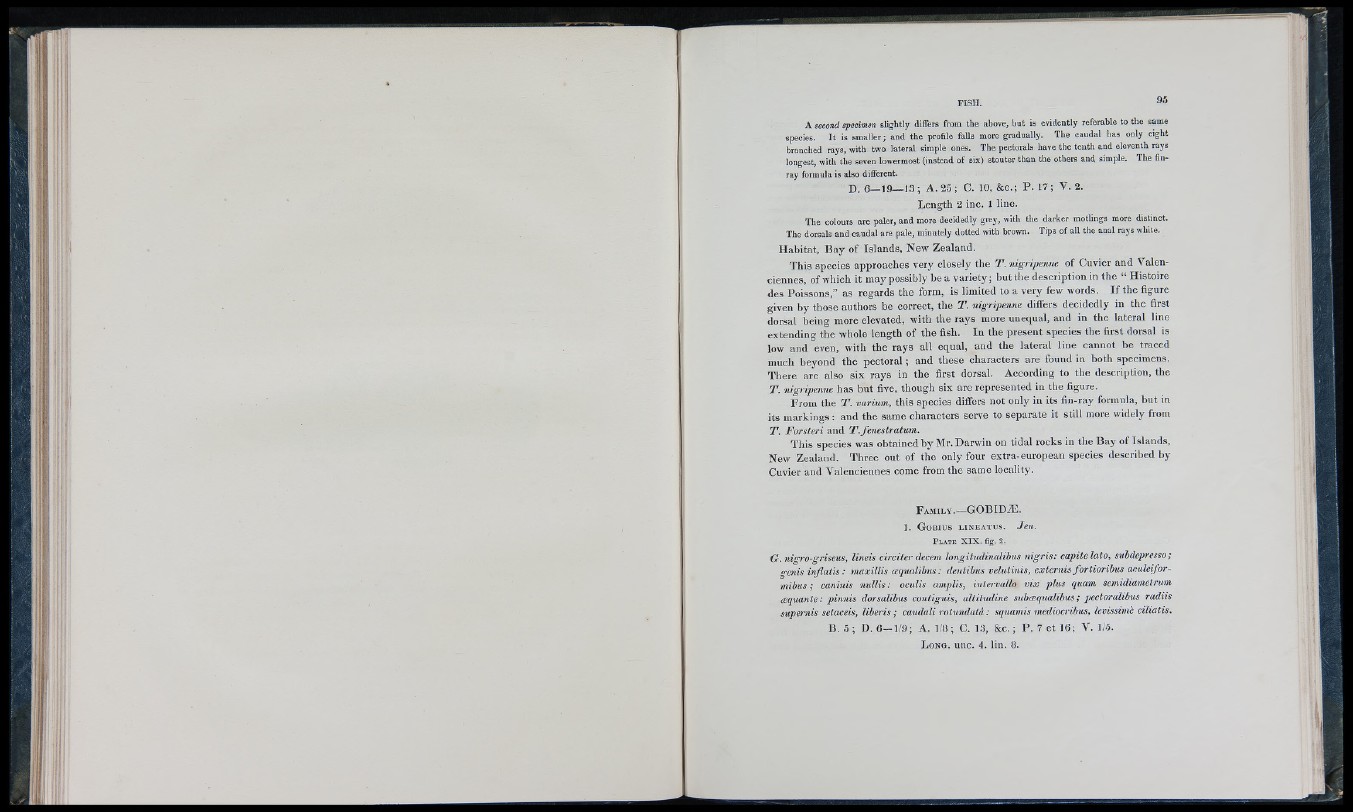
A second specimen slightly differs from the above, but is evidently referable to the same
species. It is sm aller; and the profile falls more gradually. The caudal has only eight
branched rays, with two lateral simple ones. The pectorals have the tenth and eleventh rays
longest, with the seven lowermost (instead of six) stouter than the others and simple. The fin-
ray formula is also different.
D. 6—19— 13; A. 25 ; C. 10, &c.; P . 17; V. 2.
Length 2 inc. 1 line.
The colours are paler, and more decidedly grey, with the darker motlings more distinct.
The dorsals and caudal are pale, minutely dotted with brown. Tips of all the anal rays white.
H abitat, B ay of Islands, New Zealand.
This species approaches very closely the T . nigripenne of Cuvier and Valenciennes,
of which it may possibly he a variety; but the description in the “ Histoire
des Poissons,” as regards the form, is limited to a very few words. If the figure
given by those authors be correct, the T . nigripenne differs decidedly in the first
dorsal being more elevated, with the rays more unequal, and in the lateral line
extending the whole length of the fish. In the present species the first dorsal is
low and even, with the rays all equal, and the lateral line cannot be traced
much beyond the pectoral ; and these characters are found in both specimens.
There are also six rays in the first dorsal. According to the description, the
T . nigripenne has but five, though six are represented in the figure.
From the T . varium, this species differs not only in its fin-ray formula, but in
its m arkings: and the same characters serve to separate it still more widely from
T . Forsteri and T.fenestratum.
This species was obtained by Mr. Darwin on tidal rocks in the B ay of Islands,
New Zealand. Three out of the only four extra-european species described by
Cuvier and Valenciennes come from the same locality.
F a m il y .—GOB IDÆ.
1. G o b iu s l i n e a t u s . Jen.
P l a t e X IX . f i g . 2 .
G. nigro-grisexis, lineis circiter decern longitudinalibus nigris: capite lato, suhdepresso;
genis injiatis : maxillis eequalihus: dentibus velutinis, externis fortioribus aeuleifor-
mibus; caninis nullis: oculis ampUs, intervallo vix phis quam semidiametrum
aquante: pinnis dorsalibus contiguis, altitudine suboequalibus; pectoralibus radiis
supernis setaceis, liberis ; caudali rotundatâ: squamis mediocribus, levissimh ciliatis.
B. 5 ; D. 6 -1 /9 ; A. 1/8; C. 18, &c. ; P . 7 et 16; V. 1/5.
L o n g . u n c . 4 . lin . 8.